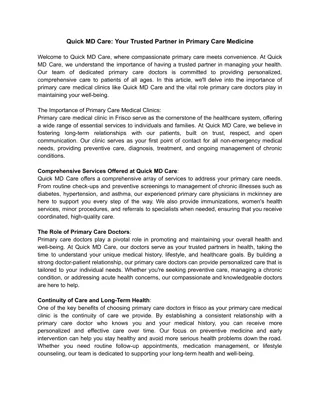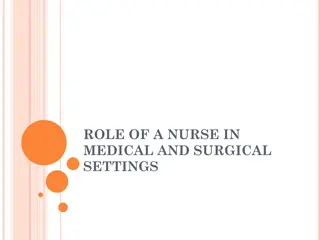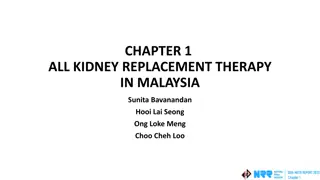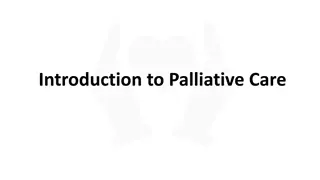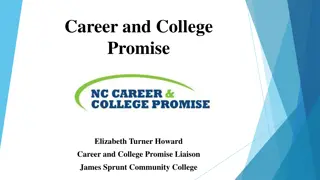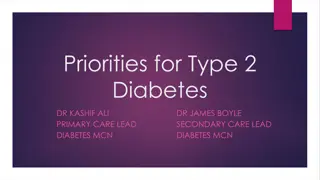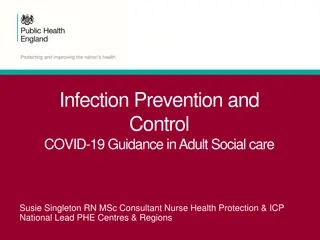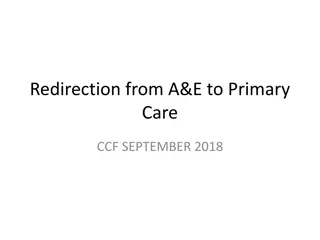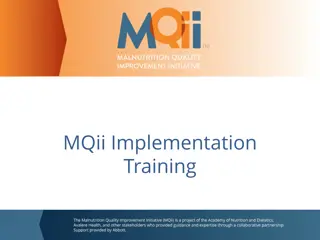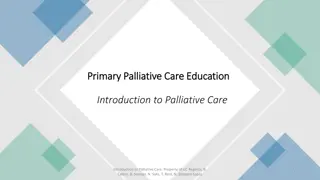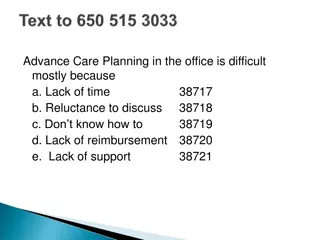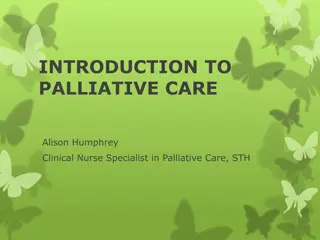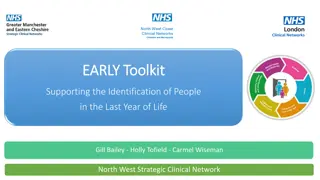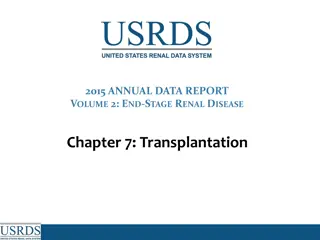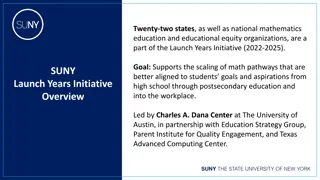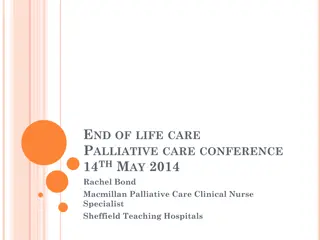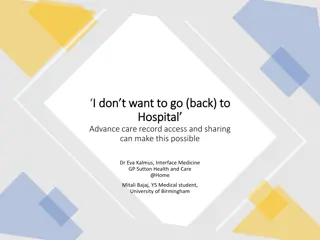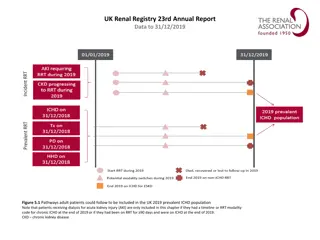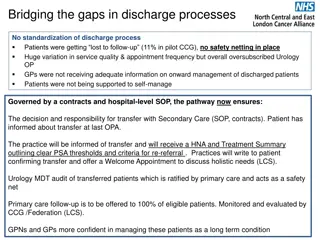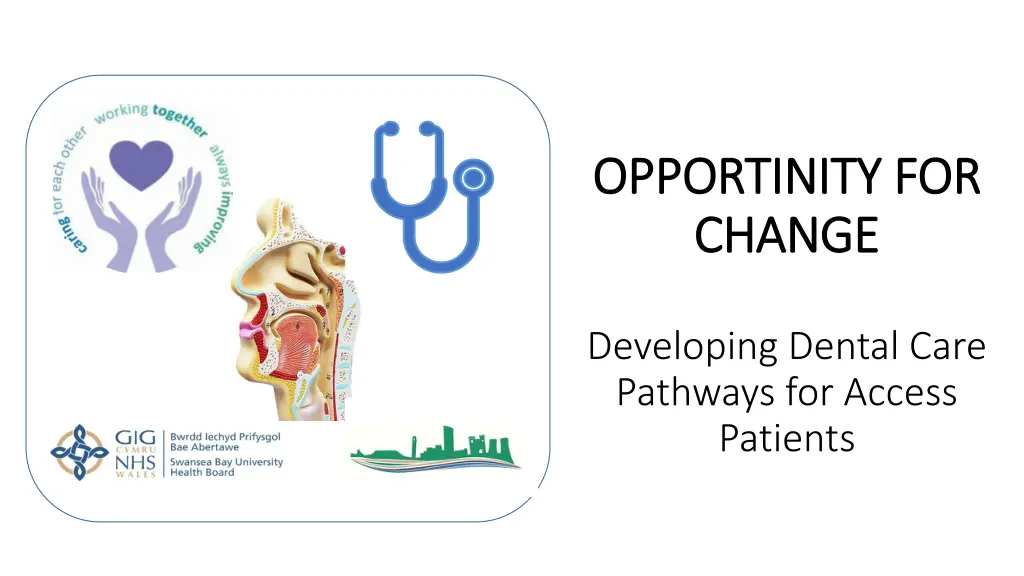
Developing Dental Care Pathways for Access Patients
"Explore the opportunities for change in dental care pathways to prioritize timely access, improve population health, and reduce waiting times. Principles and guidance focus on referral management centers, triage templates, and ensuring regular care availability. Drafts highlight the need for comprehensive triage, robust training, and operational improvements." (Approximately 446 characters)
Download Presentation

Please find below an Image/Link to download the presentation.
The content on the website is provided AS IS for your information and personal use only. It may not be sold, licensed, or shared on other websites without obtaining consent from the author. If you encounter any issues during the download, it is possible that the publisher has removed the file from their server.
You are allowed to download the files provided on this website for personal or commercial use, subject to the condition that they are used lawfully. All files are the property of their respective owners.
The content on the website is provided AS IS for your information and personal use only. It may not be sold, licensed, or shared on other websites without obtaining consent from the author.
E N D
Presentation Transcript
OPPORTINITY FOR OPPORTINITY FOR CHANGE CHANGE Developing Dental Care Pathways for Access Patients
Timely access to prevention focused NHS dental care What We Want To Achieve Sustained and whole system change underpinned by contract reform Improve population health and wellbeing Oral health intelligence and evidence driving improvement Teams that are trained, supported and delivering A simpler way to access dental care services A network of strong, joined up services to manage and co-ordinate care Reduced waiting times to increase patient flow and access Reduced patient presentation in secondary care Developing Dental Care Pathways for Access Patients Draft 2
PRINCIPLES AND GUIDANCE Re fe r ra l M a n a g e m e n t C e n t re ( R M C ) Triage contact with patient needs to be more comprehensive Robust triage template and further training for members of the team: Training to be provided by the DPA team/Primary Care team Monitoring via 3-montly audit of the RMC data done by Primary Care team Operates 7/7 (out of hours) Developing Dental Care Pathways for Access Patients Draft 3
PRINCIPLES AND GUIDANCE Re fe r ra l M a n a g e m e n t C e n t re ( R M C ) Triage template (examples questions): However you answer this question, you will have an appointment to address your urgent need/ emergency care Would you like to see a dentist and just have a one off appointment to deal with the urgent need/emergency care? or Would you like to see a dentist to address the urgent need/emergency care and also to see you for a one course of treatment to treat other problems and stabilise your dental health? Developing Dental Care Pathways for Access Patients Draft 4
PRINCIPLES AND GUIDANCE Regular care is not readily available as GDS is prioritising: backlog of outstanding treatments urgent known dental needs These pathways do not include <18 patients new specific pathway to be developed The contents of the slides 6, 7 and 8 are a starting position to initiate a discussion; they are not intended to be the final outcome or be comprehensive. Developing Dental Care Pathways for Access Patients Draft 5
IN HOURS ACCESS PATIENTS PATHWAY (DRAFT) Patient calls 111 in pain gets directed to RMC Patient payment of 14.70 IHA slot of 30 minutes for urgent treatment Urgent Acorn and topical fluoride application not mandatory Practice responsible for dry socket or pain (for example) on treated area for 7/7 Patient calls back in pain 7 days of appointment for urgent care Practice phones RMC and uses another IHA slot for pain management Patient calls in pain > 7 days of appointment for urgent care Developing Dental Care Pathways for Access Patients Draft 6
STABILISATION PATHWAY (DRAFT) Patient calls 111 in pain gets directed to RMC Patient payment between 47 and 203 Patient is sent to a Dental Practice Exam + Radiographs + urgent care (40 minutes slot) Acorn + topical fluoride mandatory Practice contacts RMC when patient is discharged with discharge data Patient in pain 2 months of finishing COT Problem to be dealt by practice as per duty of care Patient in pain > 2 months of finishing course of treatment (COT) Developing Dental Care Pathways for Access Patients Draft 7
Further Considerations How does this fit with the caries and periodontal pathways? How does the engagement of the patient get assessed with only one COT? How does it fit with contract reform and changes due in April 2022? What happens to patients that fail to complete COT in the Stabilisation Pathway? Do they get redirected to IHA? Do they go back to Stabilisation Pathway? Same practice or different practice? What is the pathway for patients with known dental needs, no pain and no dentist (for example: lost filling, broken tooth, crown out)? What is the pathway for patients without known dental needs, no pain and no dentist (want a check-up)? RMC not identifying the patients as the same person example misspelling names or incorrect DOB What happens to the patient in pain after 2 months of finishing COT? Do these pathways also apply to <18 patients? What is stabilisation? Developing Dental Care Pathways for Access Patients Draft 8

